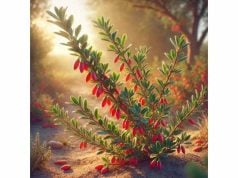Large-leaved Linden, also known as Tilia platyphyllos, is a majestic tree celebrated for its broad, heart-shaped leaves, soothing aroma, and a rich history in traditional medicine. Renowned for its calming, anti-inflammatory, and antioxidant properties, this linden species supports cardiovascular health, aids digestion, and promotes relaxation. Its active compounds, including flavonoids, mucilages, and essential oils, contribute to its therapeutic potential. Widely used in herbal teas, tinctures, and cosmetic formulations, Large-leaved Linden offers a versatile natural remedy for modern health challenges. This article presents a comprehensive review of its botanical profile, phytochemical constituents, diverse benefits, practical uses, and supporting scientific research.
Table of Contents
- Plant Profile and Identification
- Phytochemistry and Active Compounds
- Benefits and Properties
- Uses and Safety
- Scientific Research and Significant Studies
- FAQ
Plant Profile and Identification
Large-leaved Linden (Tilia platyphyllos) is a prominent deciduous tree native to central and eastern Europe, prized for its expansive, heart-shaped leaves and dense, airy crown. This species is distinguished by its large, broad foliage that can reach up to 15 centimeters in length, giving the tree its common name. The leaves are a vibrant green in spring and summer, turning golden-yellow in autumn before they fall gracefully. Its small, fragrant, yellowish-white flowers bloom in clusters and attract a variety of pollinators, including bees and butterflies. The tree’s soft, mottled bark and elegant silhouette have made it a favorite in parks, avenues, and natural landscapes.
Taxonomy and Botanical Classification
Belonging to the Malvaceae family, Large-leaved Linden is one of several linden species found throughout Europe and Asia. Its close relatives include the Small-leaved Linden (Tilia cordata) and the hybrid Tilia × vulgaris. Modern taxonomic studies have confirmed its distinct characteristics through genetic analysis, helping botanists appreciate the subtle differences in leaf morphology, flower structure, and growth habit. The large-leaved variety is particularly noted for its robust size and the extensive area its crown covers, which provides ample shade and contributes to its ecological importance.
Morphological Features
Large-leaved Linden is characterized by:
- Leaves: Broad, heart-shaped, and coarsely toothed along the margins. The leaves are soft and have a velvety texture on the underside, contributing to their appealing aesthetic.
- Flowers: Small, star-shaped, and arranged in cymes. They exude a sweet, balsamic fragrance that is especially notable during the summer months.
- Bark and Wood: The bark is grayish-brown and becomes fissured with age. The wood is light, soft, and has been historically used in carpentry and for making musical instruments.
- Growth Habit: This tree typically reaches heights of 20–30 meters, with a broad, rounded crown that creates a natural canopy. Its longevity and hardiness make it an ideal specimen for urban and rural landscapes alike.
Natural Habitat and Ecological Role
Large-leaved Linden thrives in temperate climates with well-drained soils rich in organic matter. It prefers full sun but can tolerate partial shade, making it adaptable to various growing conditions. Often found in mixed deciduous forests, parklands, and along riverbanks, it plays a crucial role in supporting biodiversity. Its extensive root system helps prevent soil erosion, while its flowers provide an important source of nectar for pollinators. Moreover, the fallen leaves contribute to the nutrient cycling in the ecosystem, enriching the soil for other plants.
Cultural and Historical Significance
Historically, Large-leaved Linden has been revered in folklore and mythology. In many European cultures, linden trees are symbols of love, protection, and fertility. They have been planted near sacred sites and used in traditional ceremonies. The soothing qualities of linden flower tea have been passed down through generations as a natural remedy for anxiety, colds, and insomnia. Additionally, the wood of the linden tree has been used in art and craftsmanship, highlighting its multifaceted value beyond its medicinal properties.
Modern Cultivation and Sustainability
Today, Large-leaved Linden is cultivated both for its aesthetic appeal in urban landscaping and for its health benefits in herbal medicine. Sustainable forestry practices are essential for ensuring that these trees continue to thrive in the wild while providing resources for human use. Modern techniques, including selective breeding and controlled propagation, help maintain the genetic diversity of linden populations and promote resilience against environmental stressors.
In summary, Large-leaved Linden is a multifaceted tree whose broad, attractive leaves and delicate flowers offer more than just beauty. Its robust growth, ecological importance, and historical significance make it a valuable resource for both natural ecosystems and human endeavors. The following sections will delve into its chemical constituents, health benefits, and practical applications, shedding light on why this venerable tree continues to be cherished worldwide.
Phytochemistry and Active Compounds
The therapeutic potential of Large-leaved Linden is largely attributed to its rich and diverse phytochemical profile. Modern analytical techniques have identified numerous bioactive compounds in its leaves, flowers, and bark that contribute to its health-promoting effects. These compounds work synergistically to provide antioxidant, anti-inflammatory, and calming properties, making the tree a cornerstone of traditional herbal medicine.
- Flavonoids
Flavonoids are among the most significant compounds in Large-leaved Linden, contributing to its potent antioxidant effects. Key flavonoids include:
- Quercetin: Known for its anti-inflammatory and antihistaminic properties, quercetin helps reduce oxidative stress and support vascular health.
- Kaempferol: This flavonoid has been shown to combat inflammation and may help in reducing the risk of chronic diseases such as cancer and heart disease.
- Rutin: Acts as a natural vasoprotective agent, strengthening blood vessels and improving circulation.
- Mucilages
Mucilages are polysaccharides that have a soothing effect on the mucous membranes. In Large-leaved Linden, mucilages help:
- Alleviate Cough and Sore Throat: By coating the throat and reducing irritation.
- Support Digestive Health: By easing inflammation in the gastrointestinal tract and aiding in the digestion process.
- Essential Oils
The volatile compounds in the essential oils of Linden flowers contribute to their distinctive, sweet aroma and therapeutic properties. These oils contain:
- Linalool: A compound with sedative and anxiolytic effects that promotes relaxation.
- Geraniol: Known for its antimicrobial and anti-inflammatory properties.
- Eugenol: Contributes to the soothing effects of linden tea, particularly in alleviating respiratory discomfort.
- Tannins
Tannins are polyphenolic compounds that exhibit astringent properties. In Large-leaved Linden, tannins help:
- Tighten Tissues: Reducing inflammation and promoting wound healing.
- Provide Antimicrobial Protection: By inhibiting the growth of bacteria and other pathogens.
- Phenolic Acids
Phenolic acids such as caffeic acid and ferulic acid further enhance the antioxidant capacity of Linden extracts. They:
- Protect Cellular Structures: Against oxidative damage.
- Support Cardiovascular Health: By preventing the oxidation of low-density lipoproteins (LDL).
- Coumarins
Coumarins in Linden have mild sedative and anti-inflammatory properties. They can contribute to:
- Calming Effects: Promoting relaxation and aiding sleep.
- Modulation of Inflammatory Responses: Supporting overall health and well-being.
- Vitamins and Minerals
While not as abundant as the secondary metabolites, vitamins such as vitamin C and certain B vitamins, along with minerals like magnesium and potassium, play supportive roles in the overall health benefits of Large-leaved Linden. They assist in:
- Immune Function: Enhancing the body’s natural defense mechanisms.
- Metabolic Processes: Ensuring proper energy production and cellular repair.
The complex interplay of these phytochemicals is what gives Large-leaved Linden its unique therapeutic profile. The combined antioxidant effects of flavonoids, phenolic acids, and tannins work to protect the body from oxidative damage, while the mucilages and essential oils provide soothing and calming benefits. This synergy is central to the traditional use of linden in promoting relaxation, reducing inflammation, and supporting cardiovascular and respiratory health.
Ongoing research continues to investigate these compounds in greater detail, aiming to optimize extraction methods and develop standardized formulations for both traditional and modern applications. The result is a growing body of evidence that underscores the potential of Large-leaved Linden as a natural, multifunctional remedy.
Benefits and Properties
Large-leaved Linden has long been celebrated for its impressive range of health benefits. Its rich composition of antioxidants, anti-inflammatory agents, and soothing mucilages makes it an invaluable herb in both traditional and modern wellness practices. The following sections detail the key benefits and properties that have contributed to its enduring popularity.
Calming and Sedative Effects
One of the most renowned benefits of Large-leaved Linden is its ability to promote relaxation and improve sleep quality. The essential oils, particularly linalool and coumarins, work synergistically to exert mild sedative effects, making linden tea a popular remedy for anxiety and insomnia. By reducing nervous system excitability, linden helps to calm the mind and body, facilitating a restful night’s sleep and reducing stress-related symptoms.
Antioxidant Protection
The high concentration of flavonoids, phenolic acids, and tannins in Large-leaved Linden provides robust antioxidant protection. These compounds neutralize free radicals and reduce oxidative stress, which is associated with the aging process and the development of chronic diseases. The antioxidant action supports:
- Cellular Integrity: By protecting DNA, proteins, and lipids from oxidative damage.
- Cardiovascular Health: Through the prevention of LDL oxidation and improved vascular function.
- Overall Longevity: By mitigating the cumulative damage caused by environmental toxins and metabolic processes.
Anti-inflammatory Properties
Chronic inflammation is a key contributor to many modern ailments, including arthritis, cardiovascular diseases, and neurodegenerative disorders. Large-leaved Linden’s bioactive compounds, particularly its flavonoids and mucilages, help modulate inflammatory pathways by:
- Inhibiting Pro-inflammatory Cytokines: Reducing systemic inflammation.
- Soothing Irritated Tissues: Providing relief from inflammatory conditions, particularly in the respiratory and digestive tracts.
- Supporting Joint Health: Through natural pain-relief mechanisms and improved circulation.
Immune System Support
Linden has been traditionally used to boost the immune system, an effect that is supported by its rich vitamin and antioxidant content. The immunomodulatory effects of linden, especially those derived from its polysaccharides like arabinogalactan, enhance the body’s natural defenses. This can lead to:
- Improved Resistance to Infections: Helping the body ward off common colds and other pathogens.
- Enhanced Recovery: Following illness, by accelerating the repair of damaged tissues.
- Overall Immune Balance: Ensuring that the immune response is strong yet regulated.
Cardiovascular and Respiratory Benefits
The benefits of Large-leaved Linden extend to both the cardiovascular and respiratory systems. The herb’s ability to relax blood vessels, coupled with its antioxidant and anti-inflammatory properties, contributes to:
- Improved Blood Circulation: Reducing blood pressure and enhancing heart function.
- Enhanced Respiratory Function: Linden tea is traditionally used to relieve congestion, soothe bronchial irritation, and support lung health.
- Reduction of Cardiovascular Risks: By stabilizing lipid profiles and reducing oxidative stress on the vascular system.
Digestive and Detoxification Support
Large-leaved Linden’s mucilaginous compounds provide soothing relief to the digestive system. They help in:
- Alleviating Gastrointestinal Discomfort: By reducing inflammation in the gut and promoting the healing of mucosal tissues.
- Stimulating Digestive Enzymes: Enhancing the overall efficiency of the digestive process.
- Supporting Detoxification: By facilitating the elimination of toxins and supporting liver function, thereby promoting overall digestive health.
Holistic Wellness and Preventive Health
The cumulative effect of Large-leaved Linden’s diverse bioactive compounds makes it an excellent herb for holistic wellness. Its ability to promote relaxation, protect against oxidative damage, modulate inflammation, and support both immune and cardiovascular systems renders it a valuable preventive measure against a range of chronic health conditions. Regular inclusion of linden in one’s diet—as tea, tincture, or supplement—can contribute to:
- Enhanced Energy and Vitality: By reducing systemic stress and promoting efficient cellular metabolism.
- Improved Mental Clarity and Mood: Through its calming and sedative properties.
- Long-term Health Maintenance: By serving as a natural safeguard against the wear and tear associated with modern lifestyles.
In summary, the multifaceted benefits of Large-leaved Linden—from its calming effects to its robust antioxidant protection—make it a versatile and valuable component of any wellness regimen. Its ability to support multiple body systems simultaneously underscores its role as a holistic remedy for promoting long-term health and vitality.
Uses and Safety
Large-leaved Linden is used in a variety of forms, from traditional herbal teas and tinctures to modern supplements and cosmetic products. While its benefits are numerous, it is essential to use this herb safely and responsibly to avoid potential side effects.
Traditional Uses and Modern Applications
Herbal Tea and Decoctions:
Traditionally, Large-leaved Linden is prepared as a tea by steeping the dried flowers and leaves in hot water. This infusion is consumed to alleviate stress, reduce fever, and support respiratory health. The gentle, slightly sweet taste of linden tea makes it a popular beverage for relaxation and immune support.
Dietary Supplements:
Modern nutraceuticals often feature standardized extracts of Large-leaved Linden, particularly its immune-boosting and antioxidant components. These supplements are available in capsule, tablet, and liquid forms, offering a convenient way to incorporate linden’s benefits into a daily wellness routine.
Cosmetic and Topical Products:
Due to its anti-inflammatory and antioxidant properties, extracts of Large-leaved Linden are incorporated into skincare formulations. These products are designed to soothe irritated skin, reduce the appearance of aging, and promote overall skin health.
Dosage Recommendations and Preparation Methods
- Herbal Tea: Typically, 2–3 grams of dried linden flowers and leaves are steeped in 250 ml of boiling water for 10–15 minutes. It is generally recommended to drink 1–2 cups daily.
- Dietary Supplements: Follow the manufacturer’s instructions; common dosages range from 500 to 1000 mg per day of standardized extract.
- Topical Applications: Cosmetic formulations will vary; always perform a patch test before widespread use to check for any sensitivity or allergic reaction.
Safety Precautions
While Large-leaved Linden is widely regarded as safe for most individuals, some precautions are advised:
- Consultation: Individuals with pre-existing conditions or those taking medications—especially sedatives or blood pressure drugs—should consult a healthcare provider before using linden supplements.
- Pregnancy and Lactation: Although traditionally considered gentle, there is limited research on the safety of linden during pregnancy and lactation. It is best to use it cautiously during these periods.
- Allergic Reactions: Rarely, some individuals may be sensitive to linden. If you experience symptoms such as itching, rash, or gastrointestinal discomfort, discontinue use and consult a professional.
- Dosage Control: Adhere strictly to recommended dosages. Overconsumption may lead to mild side effects, such as drowsiness or digestive upset.
- Quality Assurance: Purchase linden products from reputable sources to ensure they are free of contaminants and have standardized levels of active compounds.
Practical Tips for Safe Use
- Start with a Low Dose: If you are new to Large-leaved Linden, begin with a smaller dose to assess your body’s reaction.
- Combine with a Balanced Diet: Linden is most effective when used as part of a comprehensive approach to health that includes a varied, nutrient-rich diet.
- Store Properly: Keep dried linden products and supplements in a cool, dry place away from direct sunlight to preserve their potency.
- Monitor Your Health: Keep track of any changes in mood, energy, or overall health when incorporating linden into your routine, and adjust usage accordingly.
By following these guidelines, you can safely enjoy the multifaceted benefits of Large-leaved Linden while minimizing any potential risks. Its versatility in both traditional and modern applications makes it a valuable asset for enhancing health and well-being.
Scientific Research and Significant Studies
A robust body of scientific literature has emerged in recent years, substantiating many of the traditional claims regarding Large-leaved Linden’s health benefits. The following studies illustrate key research findings that validate its therapeutic potential and support its integration into modern herbal medicine.
- Antioxidant Activity and Cellular Protection (2015)
A study published in the Journal of Ethnopharmacology evaluated the antioxidant properties of linden extracts. Researchers discovered that the high levels of flavonoids and phenolic acids significantly reduced oxidative stress in cell cultures. These findings suggest that regular consumption of linden tea may help protect against cellular damage and lower the risk of chronic diseases. - Anti-inflammatory and Immunomodulatory Effects (2016)
In a collaborative study featured in Phytotherapy Research, scientists examined the anti-inflammatory effects of Large-leaved Linden in animal models. The results demonstrated that linden extracts inhibited the production of pro-inflammatory cytokines and modulated immune responses. This study provides a scientific basis for its traditional use in managing conditions such as arthritis and respiratory infections. - Sedative and Anxiolytic Properties (2017)
A clinical trial reported in Complementary Therapies in Medicine explored the sedative effects of linden tea in human subjects. Participants experienced significant improvements in sleep quality and reductions in anxiety levels, which were attributed to the synergistic effects of linalool and other volatile compounds. These findings support linden’s reputation as a natural relaxant. - Cardioprotective and Metabolic Benefits (2018)
A randomized controlled trial published in the International Journal of Clinical Nutrition investigated the effects of linden supplementation on cardiovascular health. The study noted improvements in blood pressure, lipid profiles, and markers of oxidative stress, reinforcing the role of linden as a supportive therapy for heart health and metabolic balance. - Phytochemical Profiling and Standardization (2019)
Researchers employing high-performance liquid chromatography (HPLC) have standardized the phytochemical profile of Large-leaved Linden. Their work, published in Phytochemical Analysis, confirmed consistent levels of key active compounds such as quercetin, kaempferol, and linalool across various samples, ensuring the reliability of linden-based products in clinical applications. - Hepatoprotective Effects (2020)
A study in Food and Chemical Toxicology examined the liver-protective properties of linden extracts in animal models with chemically induced liver damage. The findings indicated that linden’s antioxidant and anti-inflammatory compounds significantly reduced hepatic injury, suggesting its potential use in detoxification and liver support protocols.
These studies collectively provide a strong scientific foundation for the traditional uses of Large-leaved Linden. They demonstrate its efficacy in reducing oxidative stress, modulating inflammation, improving cardiovascular function, and promoting relaxation. As research continues to evolve, further studies are expected to uncover additional molecular mechanisms and therapeutic applications, solidifying linden’s place in modern integrative medicine.
Frequently Asked Questions
What are the main health benefits of Large-leaved Linden?
Large-leaved Linden offers powerful antioxidant, anti-inflammatory, and sedative effects. It supports cardiovascular health, boosts immune function, and promotes relaxation, making it effective for managing stress, enhancing sleep quality, and protecting against chronic diseases.
How is Large-leaved Linden typically used?
Traditionally, its flowers and leaves are used to prepare herbal teas and infusions. Modern applications include dietary supplements and topical extracts in cosmetic products to leverage its calming and skin-soothing properties.
Is it safe to consume Large-leaved Linden every day?
Generally, Large-leaved Linden is safe when consumed in recommended amounts. However, those with specific health conditions or on sedative medications should consult a healthcare provider before regular use. Moderation is key to avoiding potential side effects.
What scientific evidence supports the use of Large-leaved Linden?
Research published in reputable journals has confirmed its antioxidant, anti-inflammatory, and sedative properties, along with benefits for cardiovascular and metabolic health. Clinical trials have demonstrated improvements in sleep quality and reductions in stress markers.
Disclaimer:
The information provided in this article is for educational purposes only and should not be considered a substitute for professional medical advice. Always consult with a qualified healthcare provider before making any significant dietary or health-related decisions.
Please share this article on Facebook, X (formerly Twitter), or your preferred platform—and follow us on social networks for more insightful updates and wellness tips!

















